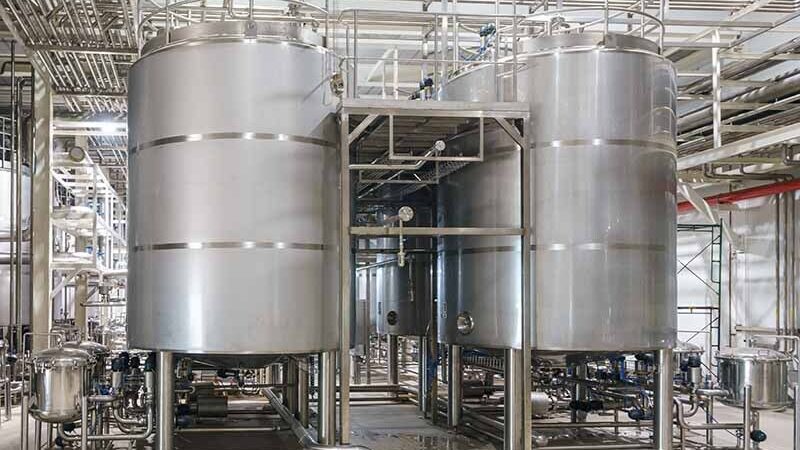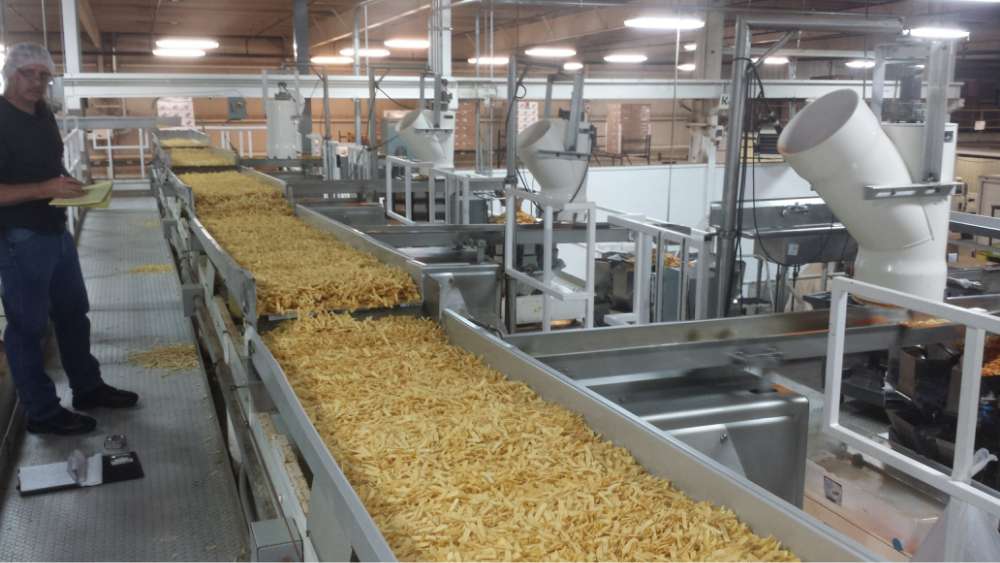In Georgia’s industrial world, every dollar and second counts. That’s why more companies are turning to optimized process designs. These smart systems are built to cut waste, speed up work, and reduce spending.
From layout changes to system upgrades, good design improves how your plant runs. It helps people work better, machines last longer, and products ship faster. Let’s explore how optimal process design can lower costs and boost success.
Optimized process designs help equipment do more with less. When your systems are well-designed, machines don’t have to work as hard or as often. This lowers wear and tear, saving money on repairs and replacements.
In Georgia plants, this kind of efficiency keeps things moving without wasting power or supplies. Better flow means fewer breakdowns and fewer surprise stops. Over time, this adds up to big savings.
A smart design also improves machine life. By reducing strain and avoiding overload, your equipment can run longer and more reliably. That means less downtime and better performance overall. With optimized process designs, your plant can lower costs and boost success.
When machines stop working, production stops with them. Optimal process design helps reduce these delays by planning around possible problems. Systems are built to stay stable and easy to maintain.
Many Georgia companies lose thousands during unexpected breakdowns. Design improvements reduce those risks by making equipment easier to reach and fix. Fast access means fast repairs.
Built-in alerts and controls also help spot issues early. When workers know about a problem sooner, they can fix it before it grows. That kind of quick action helps keep everything on track.
Efficiency and productivity are crucial in the success of any manufacturing plant. One key factor that can greatly impact these aspects is downtime – the time when machines are not operational. Every minute of downtime means a loss in production, which directly translates to a loss in profits.
This is where optimal process design comes into play. By carefully planning and optimizing processes, companies can significantly reduce downtime and increase their overall success. An optimized process design takes into consideration all possible problems and creates systems that are stable and easy to maintain.
Energy is one of the biggest costs in any industrial plant. Optimized process designs cut those costs by matching systems to the exact work being done. No wasted power—just smart, efficient flow.
From lighting to motors, every part of the plant benefits from energy-efficient design. Better insulation and smart controls can also play a big role. Even small upgrades can lead to big savings over time.
In Georgia, many businesses are now using energy audits to guide their optimal process design strategies. This leads to better results with lower monthly utility bills. By reducing energy use, businesses can also help to preserve the environment for future generations.
At PEC, we specialize in creating customized energy-efficient solutions for businesses across Georgia. Our team of experts carefully assesses each facility and develops a plan to optimize energy usage without sacrificing productivity. We take into consideration factors such as lighting, heating and cooling systems, and equipment efficiency.
With our tailored approach, we have helped numerous clients lower their energy bills significantly while also reducing their carbon footprint. Our goal is not only to save money for businesses but also to contribute towards a greener and more sustainable future.
When your process is smooth, your output rises. Optimized process designs reduce bottlenecks and wasted movement, helping workers and machines stay in sync.
With everything placed where it’s needed, steps are cut down. That means more parts completed in less time—and fewer mistakes. In Georgia, this has helped teams meet tight deadlines without overtime.
Fast production also leads to faster delivery. The sooner you make a product, the sooner you can ship it. That helps keep customers happy and costs under control.

Moving materials from one place to another seems simple, but poor design makes it costly. Optimized process designs improve how materials flow through your plant – less handling, less delay.
Smart storage systems help you find what you need fast. Clear paths and efficient delivery setups keep your work area clean and safe. That reduces risk and saves time every day.
In Georgia, companies are also using automation tools to track and manage flow. These changes keep inventory moving while keeping costs down. It also frees up employees to focus on higher-level tasks, increasing productivity and overall efficiency.
Scrap, overproduction, and rework all waste money. Optimal process design fights waste by making systems more accurate and reliable.
By fine-tuning each part of your process, you reduce errors and extra steps. That leads to better quality control and less trash in the bin. It also helps avoid redoing parts.
Georgia businesses using waste-reducing designs often see savings right away. With fewer raw materials lost, overall costs drop—and profit margins rise.
Safety starts with smart design. Optimized process designs give workers enough space, good lighting, and clear paths to move safely.
Machine placement also matters. With the right layout, workers don’t need to stretch or squeeze into dangerous spots. This reduces the chance of injury.
Georgia plants are adding barriers, signs, and safety zones as part of their redesigns. These steps make it easier for everyone to stay alert, protected, and productive.
Mistakes cost money—and time. Optimal process design helps reduce rework by building better checks and controls into every step.
Georgia teams use sensors, timers, and clear visuals to stay on track. These tools catch problems before parts move to the next stage. That means fewer issues at the end.
Rework not only slows production but also stresses workers. With better design, teams can focus on doing things right the first time. This leads to increased efficiency and a happier, safer workforce.
In today’s fast-paced manufacturing industry, it is crucial to prioritize safety and efficiency in order to stay competitive. One way companies are achieving this is through the implementation of strong process control measures.
People are your biggest asset. Optimized process designs help your team work smarter, not harder. They reduce wasted motion and unneeded tasks.
By automating simple steps, your skilled workers can focus on higher-value jobs. This increases productivity without burning out your crew. It also reduces training time for new hires.
In Georgia, many companies now design workstations that fit workers better. That helps improve comfort, speed, and output.

Time spent fixing machines is time not making products. Optimal process design gives maintenance teams fast, safe access to what they need.
Designing for serviceability means placing valves, panels, and parts where they can be reached easily. It also means clear labeling and space to work. These changes speed up every repair.
In Georgia’s fast-moving industries, this kind of planning helps reduce downtime and frustration. Workers fix things faster—and safer.
Storing too much inventory ties up space and cash. Optimized process designs help reduce this by improving flow and timing.
With a good system in place, materials arrive just in time, not too early or too late. This keeps your shelves clear and your team moving. It also helps reduce waste from expired or unused stock.
Georgia businesses are also using software tools that connect to their physical layouts. These tools support lean inventory strategies and lower overall costs.
Automation helps save time and money—but only if your system is ready for it. Optimal process design makes automation easier to install and manage.
By setting up your workflow to match machine needs, you avoid costly changes later. Everything fits together from the start. That reduces stress and boosts results.
Georgia companies are now automating welding, sorting, packaging, and more. Smart design makes these upgrades smooth and effective.
Not only does automation help save time and money, it also has the added benefit of reducing waste from expired or unused stock. By utilizing software tools that connect to their physical layouts, Georgia businesses are able to implement lean inventory strategies and lower overall costs.
But in order for automation to truly be effective, it is crucial to have an optimal process design in place. This ensures that the system is ready for automation and makes installation and management much easier.
When your process is efficient, products move faster. Optimized process designs reduce lead times by streamlining every step.
From start to finish, delays are removed. That means faster output, better shipping, and quicker billing. Customers get what they need without waiting.
In Georgia, faster delivery gives businesses a competitive edge. It helps win contracts, build loyalty, and grow reputation.
Growth is good—but it brings challenges. Optimal process design makes scaling easier by allowing flexible changes.
Systems are set up to grow with your team, not hold you back. This means faster setup for new lines, teams, or locations. Less time spent on planning equals more time producing.
Georgia companies using scalable design can move into new markets with confidence. They’re ready for whatever comes next.
Having an efficient and streamlined process is essential for any successful business. With the removal of unnecessary steps, companies can experience faster output and ultimately, better results. This also means quicker shipping and billing processes, which is a win-win for both businesses and their customers.
In Georgia, this concept of faster delivery holds even more weight. With competition constantly on the rise, having a competitive edge can make all the difference. By implementing optimal process design, businesses in Georgia can offer quicker turnaround times to their clients.
This not only helps them secure contracts but also builds loyalty among their customer base and improves their reputation.

Good design helps catch issues early. Optimized process designs include checkpoints at critical stages to keep quality high.
Visual tools, scanners, and sensors all support better outcomes. Problems are flagged before they get expensive. That means fewer returns and stronger customer trust.
In Georgia industries like food, pharma, and electronics, this level of control is essential. It protects your brand and your bottom line.
Staying compliant keeps your business safe. Optimal process design ensures your operation meets all codes, from OSHA to ISO.
Designing for compliance means fewer fines, faster audits, and smoother reviews. It also builds trust with clients and regulators. Everyone knows you’re doing things right.
Georgia facilities that stay ahead of standards reduce risk and stay open for business.
Confusion slows work down. Optimized process designs improve how teams talk and work together by keeping tools and info close by.
Clear stations, digital displays, and thoughtful layouts support better workflow. Fewer questions mean faster results. Everyone knows where to go and what to do.
This leads to smoother operations and happier staff. In Georgia’s busy facilities, that makes a big difference.
Change is constant. Optimal process design builds flexibility into your system so you can shift when needed.
Whether it’s a new product or market change, flexible layouts make adjusting easier. This saves time and money during transitions. You stay ahead without starting from scratch.
In Georgia, flexibility keeps companies competitive and ready for the future.
At PEC, we help Georgia businesses grow stronger with optimized process designs. Our experts take time to understand your needs and build smart, custom systems that reduce costs and boost results.
From layouts to automation, our optimal process design services support every stage of your operation. We make your process smoother, faster, and more efficient. Contact PEC today to start saving time and money with better designs built for your business.